 May 21, 2015 John E. Ross, KD8IDJ, Editor
| |||||||||||||
ARRL Headquarters will be closed Monday, May 25, in observance of Memorial Day. There will be no W1AW code practice or bulletin transmissions that day. ARRL Headquarters will reopen Tuesday, May 26, at 8 AM (EDT). We wish everyone a safe and enjoyable holiday weekend! Dayton Hamvention 2015: Great Weekend, Friendly Crowd Another Dayton Hamvention® is in the log, and the sponsoring Dayton Amateur Radio Association (DARA) already has begun counting down to the 2016 event (May 20-22, 2016). While Hamvention traditionally provides an ideal occasion for Amateur Radio manufacturers to introduce their latest offerings, new gear was in somewhat shorter-than-usual supply at the 2015 event. On the other hand, this may have shifted attention toward Hamvention's other activities, such as the always-popular forums and, of course, the flea market. There were scattered showers on all 3 days.
"Great weekend!" was how ARRL CEO David Sumner, K1ZZ, summed things up. He described visitors as "friendly" and said there was a lot of anticipation for the geosynchronous satellite package that AMSAT plans to put into orbit in 2017. ARRL Publications Manager and QST Editor Steve Ford, WB8IMY, described Hamvention's opening day as "extremely crowded for a Friday." Traffic at ARRL EXPO was brisk, and the ARRL Lab's spectral purity testing table saw "steady traffic with long lines at times," he added. NASA Astronaut Mike Fincke, KE5AIT, a special Hamvention guest, stopped by to tour ARRL EXPO and to chat with ARRL President Kay Craigie, N3KN, and visitors.
To celebrate 100 years of QST, ARRL introduced a commemorative edition of the first QST -- the December 1915 issue. The reprint was free for those joining, renewing, or extending their ARRL membership at Hamvention. ARRL Life Members could obtain a free copy. Those unable to attend Hamvention may obtain copies directly from ARRL for $9.95 each. On Saturday afternoon Dayton Amateur Radio Association (DARA) President Don Dubon, N6JRL, presented two $10,000 checks to President Craigie. One was a gift to support the ARRL Teachers Institute on Wireless Technology. DARA has sponsored past Teachers Institute sessions in Dayton, and a class will be held there this summer as well, July 13-16. The second check was a donation to the ARRL Foundation Scholarship Fund.
Something to look forward to in 2016: Hara Arena posted artist's depictions of renovations to the Hara complex that are expected to be completed by next year's show. What's New? New products touted at the 2015 Hamvention included the K3S transceiver from Elecraft -- an upgrade of its very popular K3. Expected to ship by mid-June, the K3S is the "second-generation, software defined superhet transceiver," the manufacturer said on its website. "We've upgraded nearly every subsystem, improving performance and adding many new features," Elecraft said.
New features include a quieter synthesizer, "unequaled" strong-signal performance, and "exceptional" transmitter purity. There's also a second preamp, a new LCD bezel, and a "soft-touch VFO A knob with improved grip." FlexRadio debuted the Maestro control console for its FLEX-6000 series of transceivers. Expected to become available later this year, the Maestro is "an intuitive, plug-and-play control console" that lets the user operate any FLEX-6000 transceiver without a PC. FlexRadio said
the unit combines a high-definition 8-inch touch display and is "ergonomically designed." European manufacturer Elad introduced at Hamvention its SDR FDM-DUO transceiver, which has been available since 2014. The manufacturer said on its website that the FDM-DUO can be operated in a traditional manner or via a PC. Its direct-conversion receiver covers 10 kHz to 54 MHz. The transmitter runs about 5-8 W. Other new products at Dayton this year included several accessories for Elecraft radios from QRP Works; the Rowetel SM1000 digital voice unit, and the MFJ-226 graphical antenna analyzer and compact MFJ-939I 200 W autotuner from MFJ. Forum News On Saturday, Carole Perry, WB2MGP, moderated the Youth Forum, which featured presentations from eight talented young radio amateurs, each of whom -- along with eight additional young hams selected during a prize drawing -- enjoyed an ARRL-hosted luncheon with
Astronaut Mike Fincke. "These 16 young hams are already contributing to the second century of our Amateur Radio Service!" said ARRL Education Services Manager Debra Johnson, K1DMJ.
Galen Wilson, KF5BET, whose daughters Abbi, KF5BEW, and Kendra, KF5FYS, were among the forum presenters, expressed appreciation to Perry and to the League "for the awesome support given to the forum, the presenters, and the youth." Wilson said his family "was overwhelmed with the magnitude of support" the youngsters received during their first Hamvention. "This was truly an experience of a lifetime for my girls," he added. At its forum, AMSAT announced that the launch of its Fox-1 CubeSat has been delayed until late September. AMSAT Vice President-Engineering Jerry Buxton, N0JY, also said that AMSAT's planned geosynchronous satellite package would offer uplinks on 5 GHz and downlinks on 10 GHz.
Buxton explained that the geosynchronous footprint will not be absolutely fixed; some variation may require some up/down movement of the user's dish at certain times. Even in the worst case, he told the AMSAT Forum, a user with a fixed antenna would still be able to enjoy several hours of access each day. The transponder for the new satellite will be software defined and capable of supporting many different modes, including analog SSB. The satellite's potential footprint could extend over the US from the Mid-Pacific to Africa. AMSAT has accepted the opportunity to be a "hosted payload" on a spacecraft that Millennium Space Systems (MSS) of California is under contract to design, launch, and operate for the US government.
At the Saturday ARRL Member Forum moderated by ARRL Great Lakes Division Director Dale Williams, WA8EFK, President Craigie discussed "The Amateur Radio Parity Act of 2015 -- H.R. 1301 -- and encouraged members to recruit supporters among their congressional representatives. ARRL Regulatory Information Manager Dan Henderson, N1ND, also met with visitors to ARRL EXPO to discuss the legislation. ARRL Chief Technology Officer Brennan Price, N4QX, talked about ARRL and Amateur Radio's interests at the upcoming World Radiocommunication Conference 2015 (WRC-15), which he will attend in November. High on the list was the possibility of a contiguous 5 MHz secondary allocation somewhere within the range 5250 kHz through 5450 kHz. He also discussed the issue of vehicular radars in the 76-81 GHz range, the topic of a current FCC proceeding.
Sumner shared news of recent FCC progress toward domestic implementation of the new Amateur Radio MF and LF allocations at 135.7-137.8 kHz and 472-479 kHz and upgrading of the amateur allocation at 1900-2000 kHz from secondary to primary. ARRL First Vice President Rick Roderick, K5UR, gave a rousing presentation encouraging ARRL membership renewal. He also spoke of the need to revitalize clubs. Honors Named as Hamvention Amateur of the Year was top-tier contester Tim Duffy, K3LR, who is also ARRL Western Pennsylvania Section Manager. Hamvention's Special Achievement Award went to Tom Medlin, W5KUB, and the Technical Excellence Award to the Rev George Dobbs, G3RJV. The Orlando Amateur Radio Club (OARC) was Club of the Year. ARRL has posted an album of Dayton Hamvention 2015 photos on its Facebook page. Nepal Amateur Radio Earthquake Relief Response Again Suspended Amateur Radio emergency operations on 20 meters, resumed in the aftermath of the second Nepal earthquake, have again been suspended, according to Jayu Bhide, VU2JAU, the Amateur Radio Society of India National Coordinator for Disaster Communication. Bhide said he discussed the situation on May 17 with Satish Kharel, 9N1AA, and that the decision was based on the fact that all systems in the affected region "are working normally." VU2JAU, 9N1AA, and others have been among those active on 14.210 MHz since the initial earthquake on April 25.
"I hope there would not be any bigger than [magnitude 6] in the coming days. Though the situation in the city area is reasonable, it is extremely bad in villages. Some 90 percent of the rural houses are fully destroyed," he said, adding that monsoon season starts in about 3 weeks. Kharel said major roads to Kathmandu Valley have been shaken by tremors, causing minor landslides at various points. "Geo experts are claiming once rain begins, parts of these roads will swept [away], and Kathmandu could be cut off for weeks," he added. Amateur Radio relief activity in Nepal had begun winding down before a magnitude 7.3 earthquake shook parts of the Himalayan nation on May 12, collapsing buildings and killing dozens in a region that's still trying to recover from the much stronger earthquake on April 25. The latest quake revived the ham radio effort. Centered some 50 miles east-northeast of the Nepalese capital of Kathmandu and near the border with Tibet, the temblor was felt in India and Bangladesh. The US Geological Survey considers the May 12 tremor as an aftershock of the magnitude 7.8 earthquake on April 25.
The Army Military Auxiliary Radio System (MARS) has been continuing to gather information and statistics on the earthquake tragedy in Nepal. Sanjeeb Panday, 9N1SP, has been passing traffic to Tim McFadden, T6TM/ KB2RLB, a MARS operator in Afghanistan. Among other information, Panday told McFadden that 8250 people died as a result of the earthquakes and nearly 480,000 residences were destroyed. Another 263,000 were damaged. "Once Tim receives Nepal disaster traffic he has been preparing SPIREP and COMSPOT reports as needed and then relaying them through MARS networks to HQ, Army MARS, and me," said Daniel Wolff, KA7AGN, the MARS EUCOM/CENTCOM/AFRICOM Regional Director. "He also has been posting the information to the Nepal disaster APAN [All Partners Access Network] website." Ironically, the scenario for last year's MARS "Pacific Endeavour-14" regional disaster response was a major earthquake in Nepal. Read more. Utah Section Manager Re-Elected, Two New SMs Coming Aboard in July One incumbent Section Manger overcame a challenge to win his bid for a new term of office, while two SM candidates who ran unopposed will assume office this summer. Ballots in the two-person race in the ARRL Utah Section were counted on May 19 at ARRL Headquarters. Incumbent Section Manager Mel Parkes, NM7P, received 342 votes, while Pat Malan, N7PAT, of South Jordan, garnered 280 votes. Parkes, of Layton, has served as the Utah Section Manager since 1999.
A new Section Manager also will be taking the reins in West Texas. Ron Harden Jr, KB5HGM, of Baird, was the sole candidate for the office. He has been serving as Affiliated Club Coordinator and as an Emergency Coordinator in West Texas. Incumbent Bill Roberts, W5NPR, decided not to run for another term after serving since 2011. Five sitting Section Managers faced no opposition in the spring election cycle and will begin new 2-year terms on July 1. They are Peter Stohrer, K1PJS (New Hampshire); Richard Krohn, N2SMV (Northern New Jersey); John Bigley, N7UR (Nevada); Bob Beaudet, W1YRC (Rhode Island), and Dan Pruitt, AE6SX (San Joaquin Valley). Two-year terms for all successful candidates begin on July 1. WX4NHC at National Hurricane Center to Conduct Annual Station Test on May 30 Amateur Radio station WX4NHC at the National Hurricane Center in Miami will conduct its annual station test on May 30, 1400 until 2200 UTC. The purpose of this event is to test Amateur Radio station equipment, antennas, and computers in advance of the 2015 hurricane season, June 1 through November 30.
WX4NHC will make brief contacts on various bands and modes, exchanging signal reports and basic weather information, such as "sunny" or "rain," with any and all stations. WX4NHC will operate on HF, VHF, and UHF, including APRS on 2 and 30 meters and WinLink (subject line must contain "//WL2K"). "We will try to stay on the recognized Hurricane Watch Net frequency of 14.325 MHz most of the time and announce when we QSY," Ripoll said. "Due to space and equipment limitations, we will have two to three operators per shift," he added. "We cannot be everywhere and on every mode at the same time." He suggested locating WX4NHC by using one of the spotting networks, such as DX Summit. WX4NHC also will be on the VoIP Hurricane Net (VoIP-WX) from 2100 until 2200 UTC and on IRLP node 9219 and EchoLink WX-TALK Conference node 7203. The station also will operate on VHF and UHF repeaters in South Florida. QSL cards are available via WD4R with an SASE. Do not send cards directly to the National Hurricane Center. Radio Amateur Sworn In as New NASA Deputy Administrator Massachusetts Institute of Technology (MIT) professor Dava Newman, KB1HIK, has been sworn in as the deputy administrator of NASA. President Barack Obama appointed Newman last October, and the US Senate confirmed her appointment on April 27. The swearing-in took place on May 15 in her MIT office in Cambridge. Newman is Apollo Professor of Astronautics and Engineering Systems and the director of the Technology and Policy Program at MIT. She started her official duties as NASA's new deputy administrator on May 18 at the agency's headquarters in Washington, DC.
"I'm very excited to be at NASA," said Newman. "I'm looking forward to being a part of the agency's work to expand humanity's reach into space, advance our journey to Mars and strengthen America's leadership here at home." NASA Administrator Charles Bolden, ex-KE4IQB, said he's long admired Newman. "Her talents and skills as an educator and technological innovator will bring a new energy to our NASA leadership team, and I'm ecstatic to have her on board," he said. Newman had been on the MIT faculty since 1993. Her research has included modeling human performance in low and microgravity conditions, examining the dynamics and control of astronaut motion, and the development of assisted walking devices for the physically handicapped. Possibly her most prominent project has been the development of the BioSuit, a skintight spacesuit that would give astronauts unprecedented comfort and freedom in exploration of planetary surfaces and extra-vehicular activity. An avid sailor, Newman has circumnavigated the globe. -- Thanks to MIT and to NASA Friedrichshafen's "Ham Radio" Marks 40 Years in June with Space Theme "Ham Radio," Europe's largest Amateur Radio event, celebrates its 40th anniversary this year. The annual gathering, known to most simply by its location -- Friedrichshafen -- takes place June 26-28 on the shore of Lake Constance in southwest Germany. The exhibition in 2014 attracted more than 17,000 visitors, including contingents from the ARRL and the International Amateur Radio Union (IARU). The Deutscher Amateur Radio Club (DARC) is a Ham Radio cosponsor, and its theme for this year's gathering is "Space stations, satellites, reflections: Amateur Radio contact with space." The DARC celebrates its 65th anniversary this year.
Representing the ARRL in Friedrichshafen will be League President Kay Craigie, N3KN; CEO David Sumner, K1ZZ; Membership Manager Diane Petrilli, KB1RNF, and Assistant Field Services and Radiosport Manager Norm Fusaro, W3IZ. ARRL volunteer Hal Turley, W8HC, will assist with DXCC card checking. Heading the IARU team will be President Tim Ellam, VE6SH/G4HUA. He'll be accompanied by IARU Vice President Ole Garpestad, LA2RR, and Secretary Rod Stafford, W6ROD. Friedrichshafen will host a Contest University (CTU) session on Friday, June 26, for beginners and pros. The instructors include some of the world's leading radiosport enthusiasts. Some 200 Amateur Radio exhibitors from more than 30 countries, including the US, are expected to attend the show to exhibit their wares and services. Maker World -- a gathering for build-it-yourselfers, tinkerers, and experimenters -- once again will take place at Friedrichshafen at the same time as the Ham Radio exhibition.
An Amateur Radio transmitter hunt, or fox hunt, will be back again this year on Sunday morning. A ham youth camp will offer youngsters, teenagers, and adults up to age 27 a chance to explore the exhibition and get to know other young people interested in Amateur Radio. Last year's ham youth camp attracted some 120 young people (the registration deadline is June 10). The popular Ham Rally will take place on Friday and Saturday, June 26 and 27, offering a varied program for young radio enthusiasts. To commemorate the 40th anniversary of Ham Radio, the venue, Messe Friedrichshafen, will present a retrospective featuring photographs, exhibit items, and recollections from the event's past 4 decades. Contact Messe Friedrichshafen to submit items or for more information. Cape Verde 2 Meter Beacon Heard in Bonaire As reported in "The K7RA Solar Update" and the W1AW Propagation Bulletin (ARLP020/2015) for Friday, May 15, Dave Pedersen, PJ4VHF/N7BHC, on Bonaire copied a 2 meter CW signal from the D4C/B beacon on 144.436 MHz at Cape Verde via tropospheric ducting on May 6 (0100-0230 UTC). Bonaire is in the Caribbean just north of Venezuela, while Cape Verde is off the coast of Africa, west of Senegal -- a distance of nearly 3000 miles.
"I had parked my VHF array pointing west for minimum wind resistance," Pederson told ARRL Propagation Editor Tad Cook, K7RA. "Tuesday evening [May 5] I was doing some paperwork in the shack and rotated the beams back east at 0100 UTC to prepare for listening all night. To my amazement, I started copying CW while the beam was still 30° off the D4C bearing." Visit the D4C Amateur Sports Team Facebook page for more information and reception reports. CQ Names 2015 Hall of Fame Inductees CQ magazine has announced its 2015 Hall of Fame inductees.
CQ Amateur Radio Hall of Fame
The CQ DX and Contest Halls of Fame honor those amateurs who not only excel in personal performance in these major areas of Amateur Radio but who also give back to the hobby in outstanding ways. CQ DX Hall of Fame
CQ Contest Hall of Fame
Formal inductions to the CQ Contest and DX Halls of Fame took place at Dayton Hamvention. In Brief...
The K7RA Solar Update Tad Cook, K7RA, Seattle, reports: Sunspot numbers drifted below 100 over the May 14-20 reporting period, and so the average daily sunspot number declined from 146.9 over the previous 7 days to 92.1. Average daily solar flux dropped from 156.3 to 123.3.
Predicted planetary A index is 8 on May 21, 5 on May 22-28, 8 on May 29-30, 5 on May 31 through June 1, 15 and 10 on June 2-3, 5 on June 4-6, 12 on June 7, 25 on June 8-9, 12 on June 10, 5 on June 11-12, then 8, 15, and 12 on June 13-15, and 5 on June 16-24. This spreadsheet shows predicted values and more going out 45 days. In Friday's bulletin look for reports from readers and an updated forecast. Send me your reports and observations! Just Ahead in Radiosport
Upcoming ARRL Section, State, and Division Conventions and Events
Find conventions and hamfests in your area.
. . .
Subscribe to...
Free of charge to ARRL members...
| |||||||||||||
.jpg)
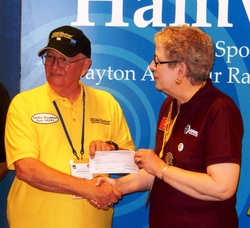

.jpg)
.jpg)
.jpg)
(1).jpg)
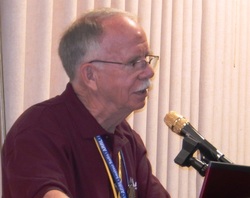
.jpg)
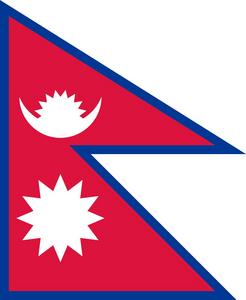 Kharel told IARU Region 3 Disaster Communications Committee Chairman Jim Linton, VK3PC, this week that aftershocks continue.
Kharel told IARU Region 3 Disaster Communications Committee Chairman Jim Linton, VK3PC, this week that aftershocks continue.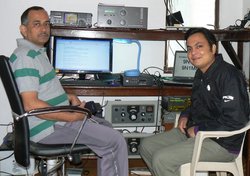
 The Maryland/DC Section will have a new Section Manager starting in July. Marty Pittinger, KB3MXM, of Owings Mills, was the only nominee for the post, now held by Jim Cross, WI3N, who decided not to run again after serving since January 2006. Pittinger is currently the Affiliated Club Coordinator in Maryland/DC. He also serves as a Public Information Officer, Official Relay Station, and Net Manager.
The Maryland/DC Section will have a new Section Manager starting in July. Marty Pittinger, KB3MXM, of Owings Mills, was the only nominee for the post, now held by Jim Cross, WI3N, who decided not to run again after serving since January 2006. Pittinger is currently the Affiliated Club Coordinator in Maryland/DC. He also serves as a Public Information Officer, Official Relay Station, and Net Manager.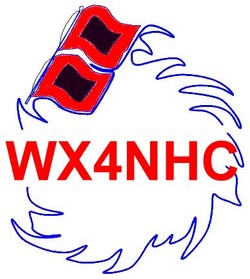 "This event is will be good practice for ham radio operators worldwide, as well as for National Weather Service (NWS) staff to become familiar with Amateur Radio communications that are available during times of severe weather," said WX4NHC Assistant Amateur Radio Coordinator Julio Ripoll, WD4R. WX4NHC also will conduct operator training.
"This event is will be good practice for ham radio operators worldwide, as well as for National Weather Service (NWS) staff to become familiar with Amateur Radio communications that are available during times of severe weather," said WX4NHC Assistant Amateur Radio Coordinator Julio Ripoll, WD4R. WX4NHC also will conduct operator training.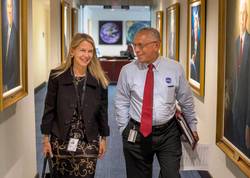
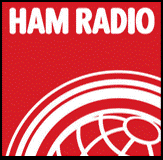
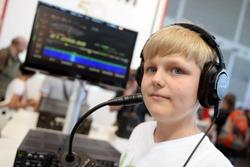
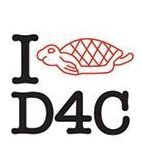 The D4C beacon runs 20 W and is about 750 meters above sea level. Pederson was able to confirm the transmission with the beacon operator, HB9DUR. He was using a Kenwood TS-2000 and two 13 element Yagis. A
The D4C beacon runs 20 W and is about 750 meters above sea level. Pederson was able to confirm the transmission with the beacon operator, HB9DUR. He was using a Kenwood TS-2000 and two 13 element Yagis. A 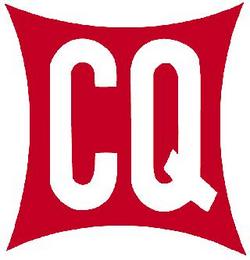 The CQ Amateur Radio Hall of Fame honors individuals, licensed or not, who have made significant contributions to Amateur Radio, to their professions, or "to some other aspect of life on our planet," CQ said.
The CQ Amateur Radio Hall of Fame honors individuals, licensed or not, who have made significant contributions to Amateur Radio, to their professions, or "to some other aspect of life on our planet," CQ said.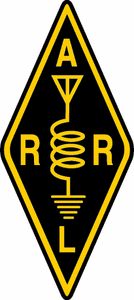 ARRL VHF/UHF Contests Now Allow Self-Spotting: Beginning with the
ARRL VHF/UHF Contests Now Allow Self-Spotting: Beginning with the 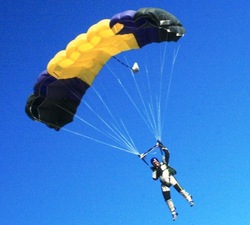 Parachute Mobileers to Operate on 10 and 2 Meters: On May 31, ham skydivers Mark Meltzer, AF6IM, and Michael Gregg, KF6WRW, will be making 10 and 2 meter contacts while "under canopy," starting at 12,000 feet. Jumper-carried APRS with GPS, heart rate, and blood oxygen data will be used. Special
Parachute Mobileers to Operate on 10 and 2 Meters: On May 31, ham skydivers Mark Meltzer, AF6IM, and Michael Gregg, KF6WRW, will be making 10 and 2 meter contacts while "under canopy," starting at 12,000 feet. Jumper-carried APRS with GPS, heart rate, and blood oxygen data will be used. Special 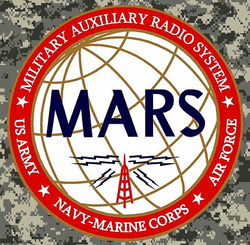 Shift from Navy-Marine Corps MARS Under Way: It's been reported that some 60 US Navy-Marine Corps Military Auxiliary Radio System (MARS) members had transitioned to the US Army MARS program within a week of the announcement earlier this month that the US Department of Defense was phasing out US Navy-Marine Corps MARS and moving its operational mission to other MARS service branches by the end of September. MARS volunteers are Amateur Radio operators who provide auxiliary or emergency communications to local, national, and international emergency and safety organizations, as an adjunct to normal communications. Army MARS Headquarters has been processing most applications in 1 day via e-mail. State directors first approve the digital membership form and forward it to US Army MARS Headquarters in Fort Huachuca, Arizona, which assigns the call sign and e-mails the license directly to the applicant. One new member was able to join his first Army MARS net on the same day he filed for transfer.
Shift from Navy-Marine Corps MARS Under Way: It's been reported that some 60 US Navy-Marine Corps Military Auxiliary Radio System (MARS) members had transitioned to the US Army MARS program within a week of the announcement earlier this month that the US Department of Defense was phasing out US Navy-Marine Corps MARS and moving its operational mission to other MARS service branches by the end of September. MARS volunteers are Amateur Radio operators who provide auxiliary or emergency communications to local, national, and international emergency and safety organizations, as an adjunct to normal communications. Army MARS Headquarters has been processing most applications in 1 day via e-mail. State directors first approve the digital membership form and forward it to US Army MARS Headquarters in Fort Huachuca, Arizona, which assigns the call sign and e-mails the license directly to the applicant. One new member was able to join his first Army MARS net on the same day he filed for transfer.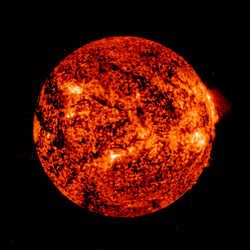 You can see the decline in solar flux in addition to the decline in predicted numbers by downloading the NOAA/USAF
You can see the decline in solar flux in addition to the decline in predicted numbers by downloading the NOAA/USAF 







